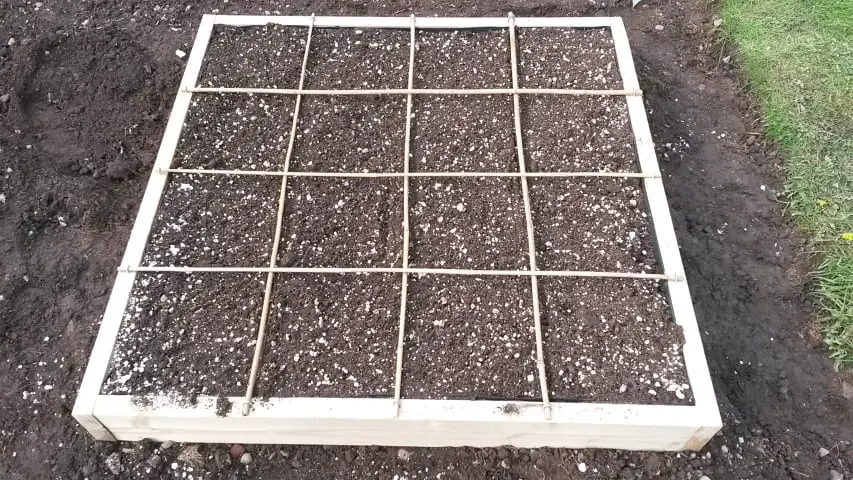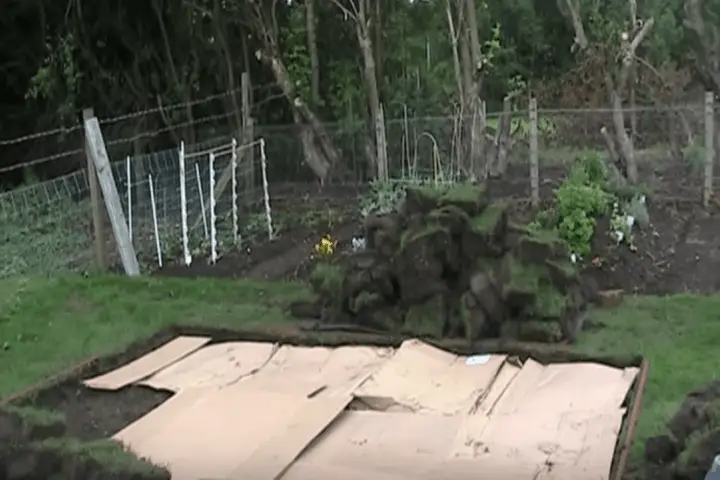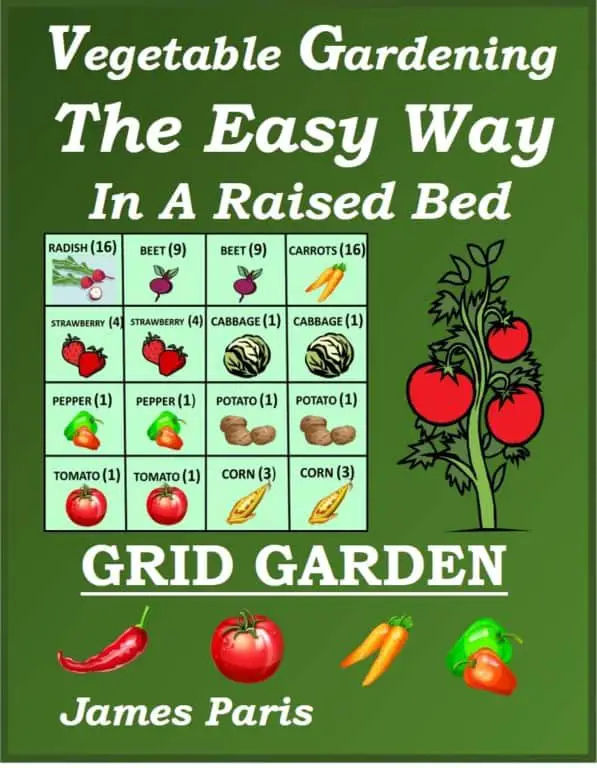Building a raised bed garden – even a Square Foot Garden, is really an exercise in simplicity! More important however is that you have a clear understanding about the Raised Bed Gardening techniques involved.
However to ‘cut to the chase’, making a ‘raised’ square foot garden is a bit of a misnomer as the fact is that the square foot garden method is in fact created using a 6 inch deep framework – which is the equivalent of a raised bed.
is a bit of a misnomer as the fact is that the square foot garden method is in fact created using a 6 inch deep framework – which is the equivalent of a raised bed.
So in effect to make a ‘normal’ SFG is creating a raised bed SFG at the same time.
Getting to the point of the question however of how to make a raised bed SFG at 4 foot square. This is the normal size as this will give you 16 one foot squares to grow your veggies in.
- Cut 2 lengths of timber 6” x 1” x 48”
- Cut 2 lengths of timber 6” x 1” x 46”
- Assemble together and nail at the corners to form a wooden frame.
- Fill with compost/soil mix
- Take 6 canes 4 foot long and attach over the framework to form a grid of 16 squares each 12 inches square
There you have a square foot garden frame all ready to grow your vegetables.

This frame can be made into an elevated square foot container garden raised or made deeper by simply adding the addition of 4 – 2” x 2” corner posts to whatever depth you require, and attaching the sides to the corner posts at 6 inch intervals until you get to the desired hight.
Can You Do A Square Foot Garden Without Raised Beds?
The answer is simple – YES. However you have to realise that the whole square foot garden concept is more than just the fact your area is set in a grid of 16 squares. The method is also highly dependent on the idea of crop rotation to achieve vegetables all season long.
This is also interlinked with the special growing mix that is needed to achieve this goal of continual food production, that is so valuable to anyone living miles from the nearest store.
However with all that said, if you simply want to plant your veggies in a way that is easily manageable then by all means, lay out your grid garden in your veggie plot and you will still get great satisfaction from this easily manageable way to grow vegetables.
in your veggie plot and you will still get great satisfaction from this easily manageable way to grow vegetables.
How many bags of soil for a 4 x 4 raised bed?
The best way to calculate this is by basing the calculations on a 6” deep bed and then multiplying the need by the depth.
For example a raised bed 4 x 4 x 6” deep will need 8 cubic feet of soil. If this bed is 18 inches high, then it will need 24 cubic feet of soil
Raised beds seldom have to be more than 12 inches deep, however they can be built any height you need to suit your requirements if for instance you are working from a wheelchair or have other physical needs.
Should I line Raised Beds With Plastic?
This is a conversation that does cause some division amongst gardeners. I can only say from experience – it depends!
If you are off the opinion that the timber you are using contains toxins you do not want leaching amongst your veggies, then by all means use a black plastic liner – on the inside sides only.
If you line the bottom of the bed then the water will gather and your soil will become water logged – obvious I know but it had to be said!
Personally I like to line the timbers to prevent them leaching away all the moisture particularly over a hot dry summer.
With modern pressure treated timbers there is absolutely no evidence that the treatment will leach into the soil, so I do not worry on that score. If however you have treated the timber yourself with a paint brush, then this will leach away into the bed, so I would just use untreated timbers and line with plastic to prevent drying out too quickly.
Should I put cardboard in raised beds?
I always like to line the bottom of my raised beds or even Hugelkultur beds with cardboard or newspaper before I fill in with the soil/compost mix.

Cardboard attracts worms which in turn fertilize and aerate your soil mix, keeping the whole growing area healthy. They also help with the composting of organic materials in a vegetable garden.
Cardboard is also an excellent weed-suppressant, especially in a shallow Raised Bed. So you can place your frame directly on top of grass and cover over with cardboard/newspaper before adding the soil mix.
Just do not add colored or glossy paper as the chemicals can leach out into the soil.
If you just need a weed suppressant then normal landscape fabric will do instead of cardboard – though you will not have the worm advantage!

